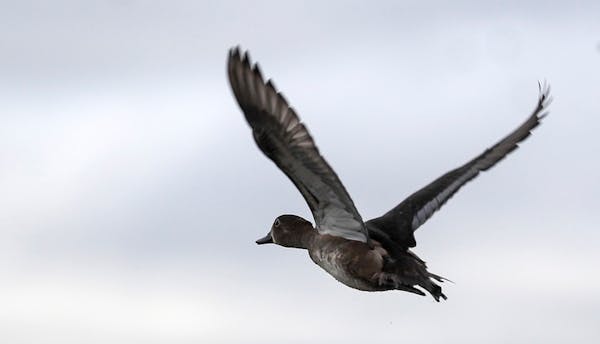DULUTH – The National Weather Service's local radar lit up again Thursday morning, but this time meteorologists knew what was afowl.
Last week, weather experts were briefly alarmed by radar activity over Rice Lake National Wildlife Refuge that looked like it could be a wildfire. It turned out to be 600,000 ducks that had been disturbed by a team of waterfowl surveyors on the lake.
Thursday, refuge staff conducted another survey — and this time called the Weather Service to give folks there a heads-up. Workers counted more than 900,000 ducks, the Weather Service said.
Based on the radar image, "the sky had to be pretty much just completely filled with ducks," said Bryan Howell, a meteorologist.
It's not unusual to see birds or insects on the radar, Howell said, but the timing of the activity was suspicious when it first caught meteorologists' eyes.
"Usually when we see birds on the radar, it's right around sunrise, when they're leaving their nests," Howell said. The ducks that time took flight around 10 a.m.
He added that the refuge manager told the Weather Service that ducks come to the lake in large numbers each year to feast on its wild rice.
This year, Howell said he was told a vast majority of the birds on the lake are ring-necked ducks, which dive for food. Higher water levels in Rice Lake mean fewer mallards are making it a stop on their trips south for the winter.

12 gorgeous new picture books for children this spring
Metro Transit steps up safety efforts with monitors displaying bus behavior for all to see
What we know about the Sen. Nicole Mitchell burglary allegations so far
Man shot by deputy in Montrose allegedly said during earlier clash he'd rather die than be arrested

